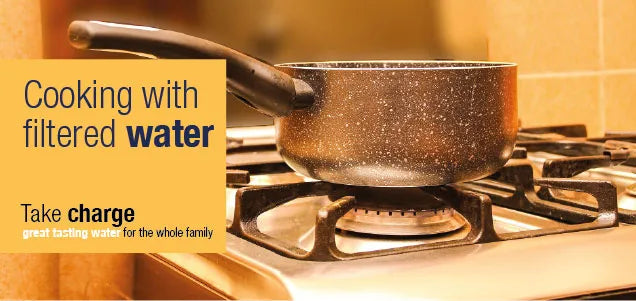Using water for cooking has been a familiar activity for a long time, but the debate rages on as to whether steaming vegetables rather than boiling them has any advantages.
Health experts claim that steaming is better, but whatever the preference, very little (if anything) is ever said about the water itself and the benefits that are gained by using filtered water for cooking.
How it works
It's all pretty straight forward. Boiling takes time and vegetables are simply boiled in water until sufficiently cooked to a preferred level of tenderness.
Steamed vegetables are cooked in a basket or vented container where they are not in the water, but are instead sitting above the pan of boiling water and are cooked by steam. Steamers can perform the same operation.
Microwaving food is a further method but is somewhat quicker. Vegetables are placed in a container with a very small amount of water and covered with a vented lid. Steam is quickly produced which part steams the food and the microwave action on the moisture content in the food does the rest.
Why is steaming better than boiling?
The healthy cooking debate
Steaming is better.
So says many a health expert. Many of the nutrients in vegetables leach into water when boiled. The longer the vegetables are cooked, the more nutritional value is lost.
This statement is generally accepted. No problem there.
But what about the water?
Have you ever noticed the water line inside the pan when you've boiled water? The pan should be clean, but there's often a line, like a tidemark, visible when the water is poured away. This is what's left as a result of evaporation and it's often limescale. Particles of calcium and other minerals are left behind, and they're not just on the pan, they're deposited on the vegetables too.
Cooking them quickly and in a small amount of water in the microwave can help to not only preserve some of their water-soluble vitamins, but less water contains fewer deposits.
It's widely accepted that vegetables that have been steamed aren't just more nutritious than those that have been boiled, but they also taste better. A blind taste test showed that people prefer the taste, texture and flavour of vegetables that have been steamed over those that have been boiled (Journal of Human Nutrition and Dietetics, February 2010).
Why? Because they've been above the water and not in it.
Filtered water for cooking.
Water forms an important part of the cooking equation, but it's rarely considered. Whether the preferred method is boiling, steaming, or microwaving, you not only want your food to look and taste good, but you want to know it's healthy and free from contaminants. Tidemarks around saucepans indicate that the water wasn't as clear as you first thought. And any impurities still have easy access to being digested by your family.
Filtered water isn't just for drinking. It's integrated into our cooking and our meals in tasty sauces and gravy, pasta and rice dishes, together with a whole host of other appetising recipes. Why choose and use great ingredients yet take water quality for granted?
Don't compromise when it comes to cooking with water; use great-tasting, healthy, filtered water - you won't regret it.






